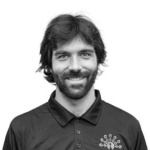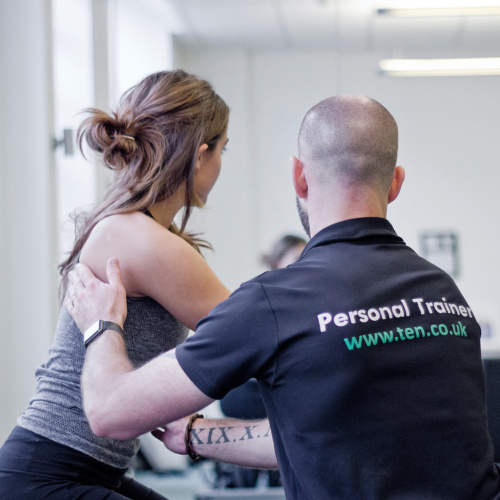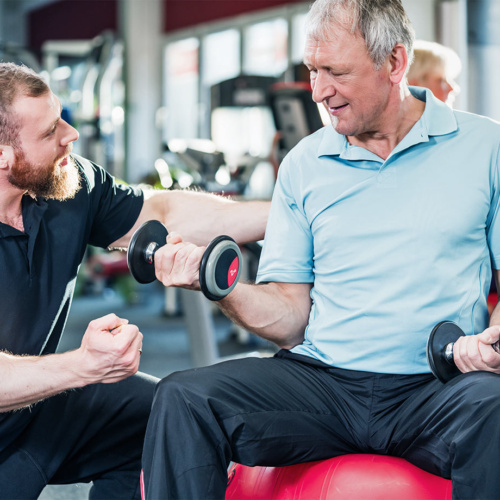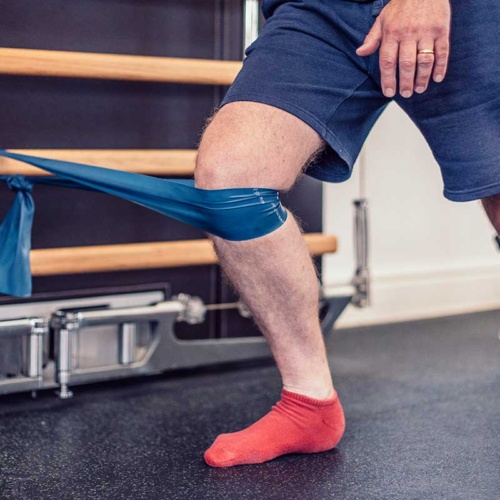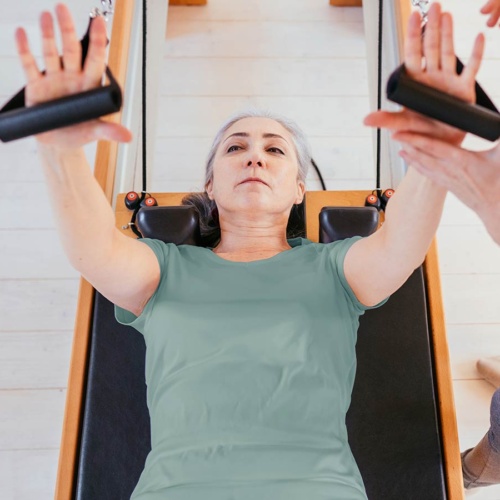Cardiovascular disease (CVD) is the cause of approximately a third of total yearly deaths worldwide. In the UK, an estimated 2.3 million people live with cardiovascular heart disease and the condition accounts for one in 5 deaths in men and one in 10 deaths in women.
A heart attack, or a diagnosis of heart disease, can be a life-changing event. But with the right rehabilitation programme in place, it’s possible to live a full and healthy life after diagnosis – and in many cases, a fuller and healthier life after rehabilitation than before diagnosis.
What is cardiac rehabilitation?
Cardiac rehab programmes aim to increase the fitness and capability of participants’ cardiovascular systems and improve muscular strength, as well as to help them to lead full, healthy lives, while reducing the risk of suffering subsequent cardiac incidents in the future.
Cardiac rehabilitation is increasingly recognised as an integral component of care for patients with cardiovascular diseases. It’s an important tool in what’s known as secondary prevention (i.e., reducing impact, preventing complications and reducing the risk of future recurrence). It should begin as soon as possible after hospital discharge.
The good news is for anyone diagnosed with heart disease is that you don’t need to face it alone; cardiac rehab is a team effort involving highly trained and skilled specialists across a number of areas. It may involve different therapies, including exercise, risk factor education, and psychological support, and will often result in beneficial, healthier lifestyle changes, including diet, exercise habits and stress management.
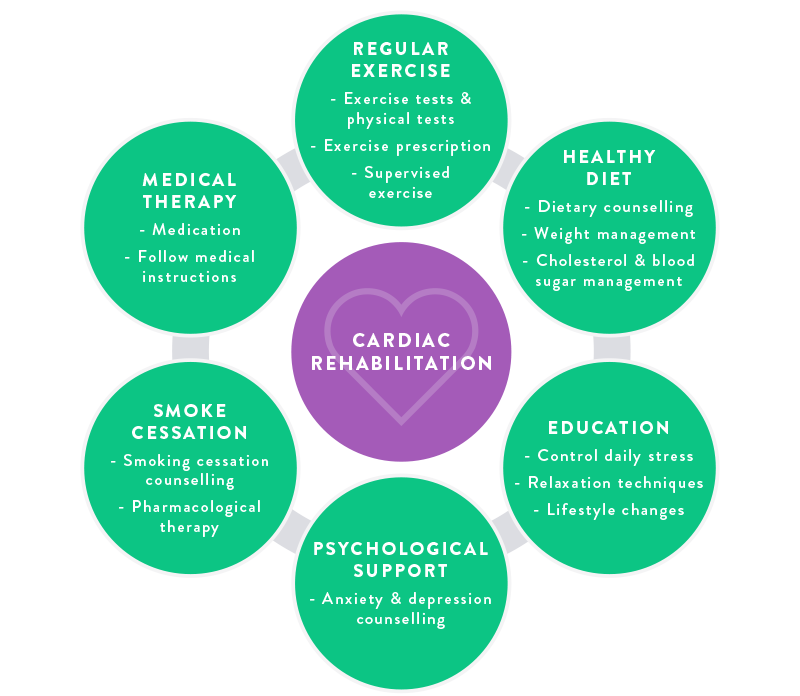
What does cardiac rehab look like?
Cardiac rehabilitation begins with a baseline assessment, usually conducted by a cardiologist, to assess the level of risk and to ensure that it’s safe to start an exercise program.
Possible tests include cholesterol and blood sugar levels, an electrocardiogram (EKG), cardiac imaging tests, and a treadmill or stationary bike exercise test. This assessment will determine the content and progression of your exercise programme, which will be bespoke – designed around your needs and abilities, and to give you the best chance of success.
Your rehab programme may involve a number of different health and wellbeing professionals, including doctors, exercise physiologists, physiotherapists, nutritionists and mental health specialists.
The exercise element of a cardiac programme will be designed by the exercise physiologist following a further assessment, which will include:
- Medical/surgical history including the most recent cardiovascular event, comorbidities, and other pertinent medical history.
- Physical examination with emphasis on the musculoskeletal and cardiopulmonary system.
- Review of recent cardiovascular tests.
- Medication, including dose, route of administration and frequency.
- Cardiovascular disease risk factors – i.e., smoking, diabetes, weight, inactivity and family history, amongst others.
As a specialist programme, cardiac rehab involves a level of monitoring that is not performed in more conventional exercise programmes. Before, during and after each session the physiologist will monitor a range of factors including:
- Heart rate (HR).
- Blood pressure.
- Body Weight (weekly).
- Symptoms or evidence of change in clinical status, such as shortness of breath at rest, dizziness, palpitations or irregular pulse or chest discomfort.
- Symptoms of exercise intolerance.
- Change in medication.
This enables them to maximise the safety and also the effectiveness of each session.
How does cardiac rehabilitation help?
Overall cardiac rehabilitation is designed to increase the participant’s quality of life and decrease the impact of their heart disease along with their long-term mortality risk.
More specifically it will improve the health and efficiency of their cardiovascular system, increase oxygen uptake and improve heart strength and function.
It will also reduce the risk of further cardiovascular problems by decreasing blood pressure, reducing body fat levels, reducing cholesterol levels (LDL and total), improving insulin sensibility and increasing muscle mass. In short – making you fitter, healthier and stronger.
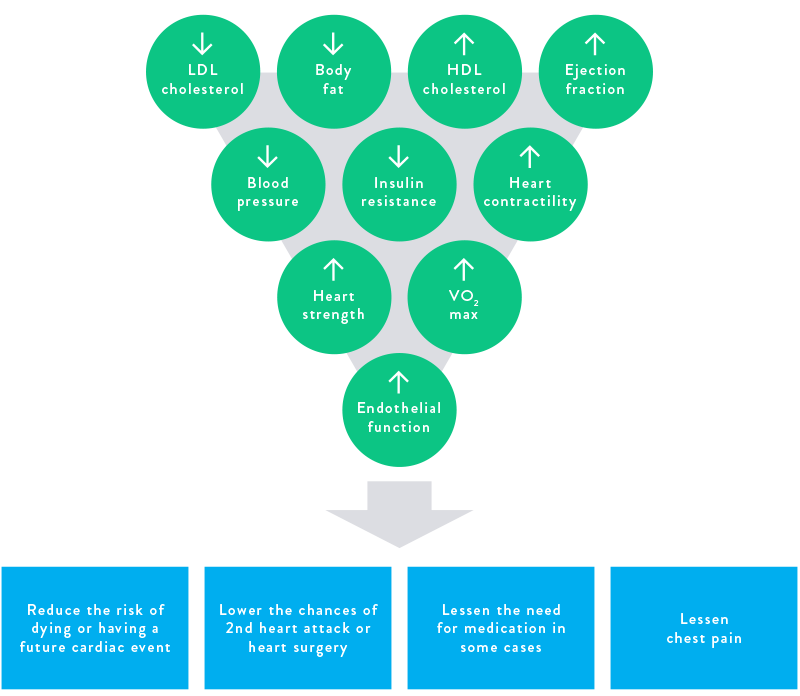
Where can I participate in a cardiac rehabilitation programme?
Programmes are run in hospitals or in specialist clinics, such as TenClinical. Cardiac rehabilitation may start while you are still in the hospital or right after you leave the hospital.
If you would like more information or would like to talk to one of our specialists, please get in touch.


